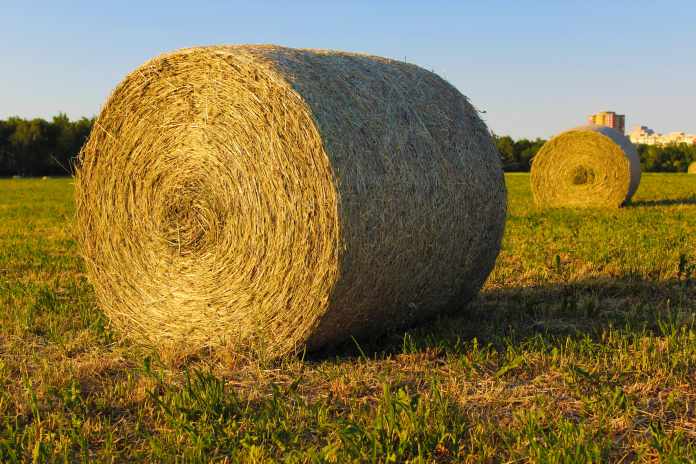While there are many who believe that hay is just for horses, farmers who are looking to purchase hay on a wider scale would beg to differ. Since hay can be used for such a wide range of purposes, it behooves farmers who are in search of the best type to learn more about all of the different types. That’s why so many turn to the good folks at David Woods Hay when they are in search of alfalfa hay for sale.
Their high-quality hay is the best choice for farmers nationwide, but before these decisions can be made, it is time to consult this awesome guide. Read on to learn more about the different types of hay and how they can assist farmers in need….
Grass Hay-Types of Hay
Ranchers and equestrians are known to choose grass hay, as it serves as a quality filler feed or standalone feed. The animals that consume grass hay are getting the very best when it comes to their proteins and starches. Grass hay is also highly useful for farmers that are currently in search of the top ways to ensure that their next crop is sustainable, healthy, and nutritious. Whether new calves are being line fed or stabled animals need bales for the winter, grass hay is a great way to go.
Legume Hay
Legume hay is commonly chosen by farmers and equestrians who have horses with greater needs. If horses are growing or lactating, legume hay is the best choice that can be made. Legume hay is not a great choice for horses that are at work or in the midst of maintenance, though. Growing horses benefit immensely from the presence of legume hay, which has twice the protein for the average horse. While many horses do not require a higher plane of nutrition, there are plenty that do.
Mixed Hay
Mixed hay allows horses to enjoy the benefits of grass hay and legume hay simultaneously. In many instances, adding legume hay to the grass hay will make the feed more appetizing for horses, providing them with the nudge that they need to start eating more regularly. In other cases, the mixed hay is provided during the winter months, so that the horse is not left to become malnourished when they cannot graze outdoors.
Cereal Grain Straw Hay
Cereal grain straw has a variety of usages. While home gardeners can also benefit from adding cereal grain straw hay to their crops, farmers often turn to this type of hay as a means of adding extra fiber to their horse’s diet. If the horse has high energy needs, the cereal grain straw hay is a great way to bypass the need for added hay. It’s the top choice for any horse that is in need of a high grain and concentrate diet.
Timothy Hay
As a type of grass hay, Timothy hay provides a high-energy, high fiber solution for horses in need. Its low protein content makes it very easy for the average horse to digest as well. The low protein content also makes it a great choice for horses that need some filler feed that will not cause them to consume too many calories. Racehorses will require Timothy hay, and they are known to keep it in front of them all day long. It is also important to note that the Timothy hay is far more susceptible to higher temperatures.
Orchardgrass
Why has orchardgrass become such a class favorite for horses as of late? The quality flavoring plays a role, as well as the high fiber content. When compared to Timothy hay, it is easy to see why orchardgrass is such a hit. The nutrient content is high, as is the protein level. The calorie content is also higher, which is something farmers must bear in mind. This hay is also not time-sensitive when it comes time to cut it. It can be grown in a wide range of locations throughout the United States, making it adaptable to a number of areas.
Oat Hay
Livestock can benefit from the presence of oat hay for a plethora of different reasons. While oats are used in a number of ways, they are often underutilized in these instances. Oat hay provides good value, grows quickly, and is a top choice for the younger livestock (as long as it is cut at the right time). Meanwhile, older livestock can benefit from oat hay that is cut a bit later. Stock cows can be fed on this hay as well, which allows farmers who buy in bulk to increase the value of their bales, as opposed to making different purchases for different horses.
Triticale-Types of Hay
As a hybrid of wheat hay and rye, triticale serves a very important function. Since wheat has so many benefits and rye thrives in a number of different climates, it is easy to see why they work so well together. The versatility levels of this feed are quite high, allowing farmers to cater to a wider range of livestock than they may have otherwise. It is not used solely as a form of hay for livestock, either. Farmers also utilize this type of hay for grazing and silage purposes. Additionally, dairy and beef cattle each benefit from the high protein forage. The added nutritional value is another bonus.
Alfalfa
As a top source of high-quality protein, alfalfa serves a very important function. Farmers who have lactating dairy cattle to look after typically choose alfalfa. These cattle require the increased protein content and energy that this feed can provide. The majority of livestock love alfalfa because of its awesome taste, making it a no-brainer choice. Farmers must pay close attention to the amount that their livestock are eating so that there is no bloating. The popularity and functionality are off the charts otherwise.



















